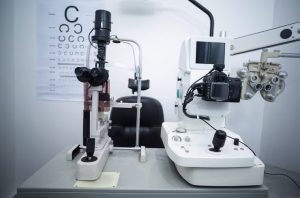All Categories
Featured
Reduced vision, a problem where standard glasses, contact lenses, or surgical procedure can not completely bring back sight, can make day-to-day tasks testing. Reduced vision rehabilitation supplies an array of sources to aid people preserve their freedom and quality of life. This short article discovers the options offered for those looking for assistance in handling their visual disabilities.
What Is Low Vision Rehabilitation?
Reduced vision rehab is a structured strategy to assist people optimize their staying vision and adapt to brand-new means of performing day-to-day jobs. Specialists collaborate with patients to establish personalized strategies, including tools, methods, and training programs that fit their unique demands.
![]()
Secret Options for Low Vision Recovery
Vision Enhancing Tools
Optical Aids: Gadget like magnifiers, telescopic glasses, and special analysis lenses can boost clearness for reading, composing, and other close-up tasks.
Digital Aesthetic Help: Devices such as electronic magnifiers and mobile video clip magnifiers supply flexible zoom capabilities for different jobs.
Wearable Modern technology: Smart glasses furnished with cameras and voice feedback offer innovative services for boosting vision.
![]()
Assistive Modern Technology
Display visitors, text-to-speech applications, and gadgets with voice commands make innovation available for individuals with low vision.
Smart device applications, such as navigating help and things recognition devices, assistance users connect with their environments better.
Educating and Treatment
Orientation and Movement Training: Specialists educate abilities for navigating rooms safely, including making use of white walking sticks or guide dogs.
Daily Living Abilities Training: Rehabilitation programs provide methods for cooking, cleaning, and personal treatment, ensuring that people can carry out necessary tasks separately.
Aesthetic Abilities Training: Workouts made to optimize using continuing to be peripheral vision can improve visual functionality.
Environmental Adjustments
Adjustments to living or workspaces can dramatically boost availability. Examples include:
Mounting brighter illumination.
Adding high-contrast markings to home appliances.
Preparing furniture to produce clear paths.
Assistance Networks
Emotional and emotional support is a critical component of recovery. Assistance groups, therapy sessions, and counseling services can aid people handle the obstacles of vision loss.
![]()
Peer networks link people with similar experiences, fostering a sense of neighborhood and shared learning.
Exactly How to Gain Access To Low Vision Recovery Provider
Low vision recovery solutions are commonly provided by:
Reduced Vision Clinics: Operated by optometrists and ophthalmologists concentrating on vision impairments.
Job-related Therapists: Specialists in adapting tasks and settings to suit private needs.
Nonprofit Organizations: Teams such as the American Foundation for the Blind (AFB) or regional blindness assistance organizations offer beneficial sources and references.
Verdict
Low vision rehabilitation offers a selection of resources customized to improve performance, increase self-confidence, and improve top quality of life. If you or a loved one is encountering the difficulties of low vision, think about reaching out to an expert or rehabilitation facility to explore the lots of options readily available.
What Is Low Vision Rehabilitation?
Reduced vision rehab is a structured strategy to assist people optimize their staying vision and adapt to brand-new means of performing day-to-day jobs. Specialists collaborate with patients to establish personalized strategies, including tools, methods, and training programs that fit their unique demands.

Secret Options for Low Vision Recovery
Vision Enhancing Tools
Optical Aids: Gadget like magnifiers, telescopic glasses, and special analysis lenses can boost clearness for reading, composing, and other close-up tasks.
Digital Aesthetic Help: Devices such as electronic magnifiers and mobile video clip magnifiers supply flexible zoom capabilities for different jobs.
Wearable Modern technology: Smart glasses furnished with cameras and voice feedback offer innovative services for boosting vision.

Assistive Modern Technology
Display visitors, text-to-speech applications, and gadgets with voice commands make innovation available for individuals with low vision.
Smart device applications, such as navigating help and things recognition devices, assistance users connect with their environments better.
Educating and Treatment
Orientation and Movement Training: Specialists educate abilities for navigating rooms safely, including making use of white walking sticks or guide dogs.
Daily Living Abilities Training: Rehabilitation programs provide methods for cooking, cleaning, and personal treatment, ensuring that people can carry out necessary tasks separately.
Aesthetic Abilities Training: Workouts made to optimize using continuing to be peripheral vision can improve visual functionality.
Environmental Adjustments
Adjustments to living or workspaces can dramatically boost availability. Examples include:
Mounting brighter illumination.
Adding high-contrast markings to home appliances.
Preparing furniture to produce clear paths.
Assistance Networks
Emotional and emotional support is a critical component of recovery. Assistance groups, therapy sessions, and counseling services can aid people handle the obstacles of vision loss.

Peer networks link people with similar experiences, fostering a sense of neighborhood and shared learning.
Exactly How to Gain Access To Low Vision Recovery Provider
Low vision recovery solutions are commonly provided by:
Reduced Vision Clinics: Operated by optometrists and ophthalmologists concentrating on vision impairments.
Job-related Therapists: Specialists in adapting tasks and settings to suit private needs.
Nonprofit Organizations: Teams such as the American Foundation for the Blind (AFB) or regional blindness assistance organizations offer beneficial sources and references.
Verdict
Low vision rehabilitation offers a selection of resources customized to improve performance, increase self-confidence, and improve top quality of life. If you or a loved one is encountering the difficulties of low vision, think about reaching out to an expert or rehabilitation facility to explore the lots of options readily available.
Latest Posts
Learn About Best Car Repair Services offered by Montclare Auto Repair – Drive with Confidence
Published en
1 min read
The Benefits of Regular Auto Maintenance at Montclare Auto Repair Keeps Your Wallet Happy
Published en
1 min read
Selecting the Right Roof Color: Effect On Energy Performance
Published en
1 min read
More
Latest Posts
Learn About Best Car Repair Services offered by Montclare Auto Repair – Drive with Confidence
Published May 29, 25
1 min read
The Benefits of Regular Auto Maintenance at Montclare Auto Repair Keeps Your Wallet Happy
Published May 27, 25
1 min read
Selecting the Right Roof Color: Effect On Energy Performance
Published May 22, 25
1 min read